Video is great, Audio is Critical for Hybrid Work, Office Work, Work from Home
Regardless of the work model being implemented, video conferencing will be part of the equation. Over the past 17-18 months most of us have participated in a video call over Zoom, Microsoft Teams, Cisco Webex, or some other video meeting platform. One thing we’ve learned is that it’s nice to have high-quality video but it’s more important to have great audio.
Audio is Critical in Video Calls
To have a productive video meeting, all participants need to be able to hear and be heard. In the early days of the pandemic, there was a massive shift to work from home. Once vaccines were introduced, businesses started developing plans to return to the office. Some leaders have made remote work permanent. While others have strong arguments for why employees need to be back in the office. And some are opting for a hybrid/flexible work model. As organizations navigate this topsy-turvy landscape, they need to focus on developing device standards that will work in the current and future environments.

Employees need the right technology to stay connected. The challenge is one size does not fit all. Business and IT leaders need to consider a day in the life of the employees in their various roles and work environments. Today team members can join video calls from a dedicated office, an area in their home, a third space, or from pretty much anywhere. Whether or not they turn their video on, they will need to be able to hear what’s being said. And if they speak, they need to be heard by all participants.
Since the start of the pandemic, I’ve been in countless video meetings, mobile calls, listen-only webinars, and online training sessions. Audio has been the most critical part. Even with great video, poor audio quality or no audio can stop a meeting dead in its tracks. It’s critical to have great audio.
My Setup

My wife and I both have dedicated offices in our home and HQ. After testing several webcams, my wife has selected the Logitech Brio webcam. She will not turn her video on unless she has her Logitech Brio. For audio, she’s been using the Poly Calisto 7200. It’s been discontinued and she’s waiting to switch to its replacement the Poly Sync 40. In the meantime, the Calisto 7200 is working great. I recently decluttered my home office workspace and now have a single 43” curved Samsung monitor. For audio and video, I have opted for the Poly Studio P15 video bar. This is a great option for my environment. The Poly Studio P15 includes everything I need to look and sound my best in video calls: 4K camera with auto-tracking, integrated privacy shutter, speakers, multi-microphone array and two USB 2.0 Type-A ports, and several nice features like Noise BlockAI and Acoustic Fence. Take a look at this video where I provide a Poly Studio P15 overview, video, and audio test!

Different Work Environments
What about different work environments? Call One, Inc. and Hello Direct, Inc. have team members working from our Headquarters in Cape Canaveral, FL, and remotely in different cities and states. We have open office environments, private offices, home environments, small to large meeting rooms, and an operations and warehouse facility. Audio and video device needs will be different depending on the team members’ roles and workspace. It’s not practical to use a speakerphone in an open office or noisy warehouse. First, we’ll take a look at desktop video options, and then we’ll discuss audio devices.
Desktop Video
There are multiple options available when it comes to desktop video and webcams. In my blog, Webcams for Business – What to consider I share a list of things to consider when choosing a webcam: Compatibility with Operating System, Supported Video Platforms, Windows Hello Face Support, Video Resolution, Field of View and Auto-Framing, Autofocus and Auto-light correction, Built-in Microphones, Privacy Shutter, Mounting Options, USB Type Connectivity, and Cable length, Additional USB Ports, All-in-One Video Bars, Device Management, Warranty, and Price. On our YouTube channel, we have a playlist dedicated to Webcams / Video Collaboration Solutions. These videos allow you to learn more about the webcams and see them in action. We also have side-by-side comparison videos.

Value Business Webcams – Under $70
Good/Better Business Webcams – Under $150
Premium Business Webcams and All-in-One Devices
Personal Speakerphones

Speakerphones are great audio devices for team members who work in a private or home office space where their audio will not distract others. Most personal speakerphones are excellent for travel as they are small and portable. Some models include Bluetooth which allows you to pair with a mobile device. This is great for streaming music or having an ad-hoc small group conference call with others. Speakerphones can be connected to a computer via USB-A or USB-C. There are wireless options that provide flexibility as to where you position the speakerphone from the computer. Zoom and Microsoft Teams certified speakerphones are available. Take a look at these USB Speakerphone options available from Poly, Jabra, EPOS, Konftel, Yamaha UC, Yealink, and ClearOne. In our Business Personal and Small Group Speakerphones video playlist, we put these speakerphones to the test and share their features and audio quality performance.
Two of my favorite personal speakerphones are the Jabra Speak 750 and Poly Sync 20. In this blog, I share my top 5 picks for USB speakerphones.
Headsets
At the beginning of the pandemic, we experienced a lot of panic-buying from customers of all sizes and industries as they transitioned from in-office to work from home. Many used “freemium” collaboration apps on their computers and there was a mad dash for any USB headset they could get their hands on. We now have over a year and a half of experience and lessons learned under our belt. What we learned is that our team members need better when it comes to headsets. Business and IT leaders need to understand team members communicate and collaborate in different ways based on their work styles and workspaces. Having the right headset fosters better communication, collaboration, and improves productivity. When team members can hear and be heard when in a voice or video call, work just flows. The first step is to identify what they are connecting their headsets to. Is it a desk phone? Which brand and model? Is it a computer? What softphone or UC platforms are being used? Do they need Zoom or Microsoft Teams certified headsets? Is it a mobile device? Does it support Bluetooth or a 3.5mm plug? Do they need to connect to a combination of those three devices?

When I was able to travel and go on customer sites, it wasn’t uncommon to walk by a cubicle and see multiple headsets. When I inquired why they had so many headsets, the response often was, “This headset is for my desk phone. This headset is for my computer. And this is the headset I brought from home to pair with my mobile phone.”
With so many team members working remotely, what are they using? Has it been tested? Is it compatible or certified with the platforms and applications your business is using? How do you know? This conversation can wait for another video and blog I’m working on. We’ll cover device management software and why it’s important for your business.
Headset Connectivity
Today headsets support single and multi-connectivity. Here is a list of connectivity combinations headsets can support today:
What connectivity do your team members need? Need help? Call One, Inc. can help you identify the right headsets based on connectivity, work environment, and use case. Contact us!
Wireless Headsets
Wireless headsets increase productivity by providing team members the ability to roam away from their workstations. They can answer and end calls right from their headset. This is beneficial in any environment. Those working from home will find being wireless especially beneficial. Wireless headsets allow you to get up and refill your coffee, tend to your children or pets, start a load of laundry, get a snack, get your deliveries, and more! There are multiple wireless operating frequencies in use today however, DECT and Bluetooth are the most prevalent when it comes to headsets. Which is best for your environment? If you need to go further, DECT headsets claim to offer a longer wireless range compared to Bluetooth headsets. Bluetooth headsets can pair to mobile phones which allows you to take calls on the go beyond your office or workspace. Poly Savi 8200 Office and Jabra Engage 65/75 Wireless headsets can easily be converted into hybrid work options. Take a look at this video to learn how!

My Top Picks for DECT Wireless Headsets
ANC Headsets
Noise continues to be a top distraction in the office and when working from home. A good set of Active Noise Canceling headphones is a great option to help you block out the noise. There are many consumer-grade options available like the Sony WH-1000XM4 and Microsoft Surface Headphones 2. The challenge is they are not designed to work with business communications and collaboration platforms. Leading manufacturers of professional-grade headsets have developed several ANC headset options that are optimized and certified to work with UC platforms like Zoom, Microsoft Teams, and Cisco Webex. They are available corded or wireless and in multiple wearing styles to include circumaural, on-ear, and in-ear options. Some models even offer boomless-mic options so they look and feel more like consumer headphones. Take a look at this video comparing the mic performance of the Bose 700 UC, EPOS Adapt 660, Jabra Evolve2 85, and Poly Voyager 8200 UC. I feel that headsets with boom-mics provide better transmit audio quality. Check out this video comparing the Poly Voyager Focus 2 and Jabra Evolve 75!
My Top Picks for ANC Headsets
Backup Audio Device Recommended
Because work is being done from a variety of environments, employees no longer have immediate physical access to replacement units. I strongly recommend having a secondary/backup audio device wherever they are working. A corded USB headset is a good backup. A good choice would be a USB headset model that does not require software/firmware updates so employees have a truly plug-and-play experience should their primary audio device quit working. The JPL Commander-1, Commander-2, 400-USB Monaural, and 400-USB-Binaural are great inexpensive options as primary or backup headsets.
Make Informed Purchasing Decisions
We created our YouTube Channel to help you make more informed purchasing decisions by testing business-grade audio and video solutions in real-world environments. Check out some of our more popular video playlists:
Conclusion

In the new normal of work from anywhere, hybrid meetings with a mix of in-person and remote participants will be prevalent. Video is awesome however, audio is critical. It’s important to have an audio device that allows the user to hear and be heard. The audio device should align with the individual team member’s work style and workspace. Since 1987, Call One, Inc. has been helping people do their business better. We are authorized resellers of Poly, Jabra, EPOS, Logitech, Cisco, JPL, Yealink, Konftel, and more. We help mid-to-large enterprise customers select the right audio and video devices for their team members. If you would like help, contact us.














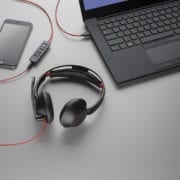



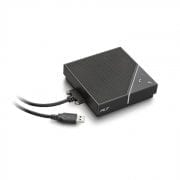
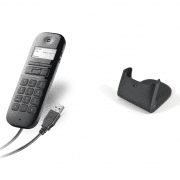
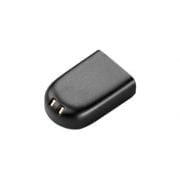
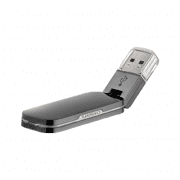


Leave a Reply
Want to join the discussion?Feel free to contribute!